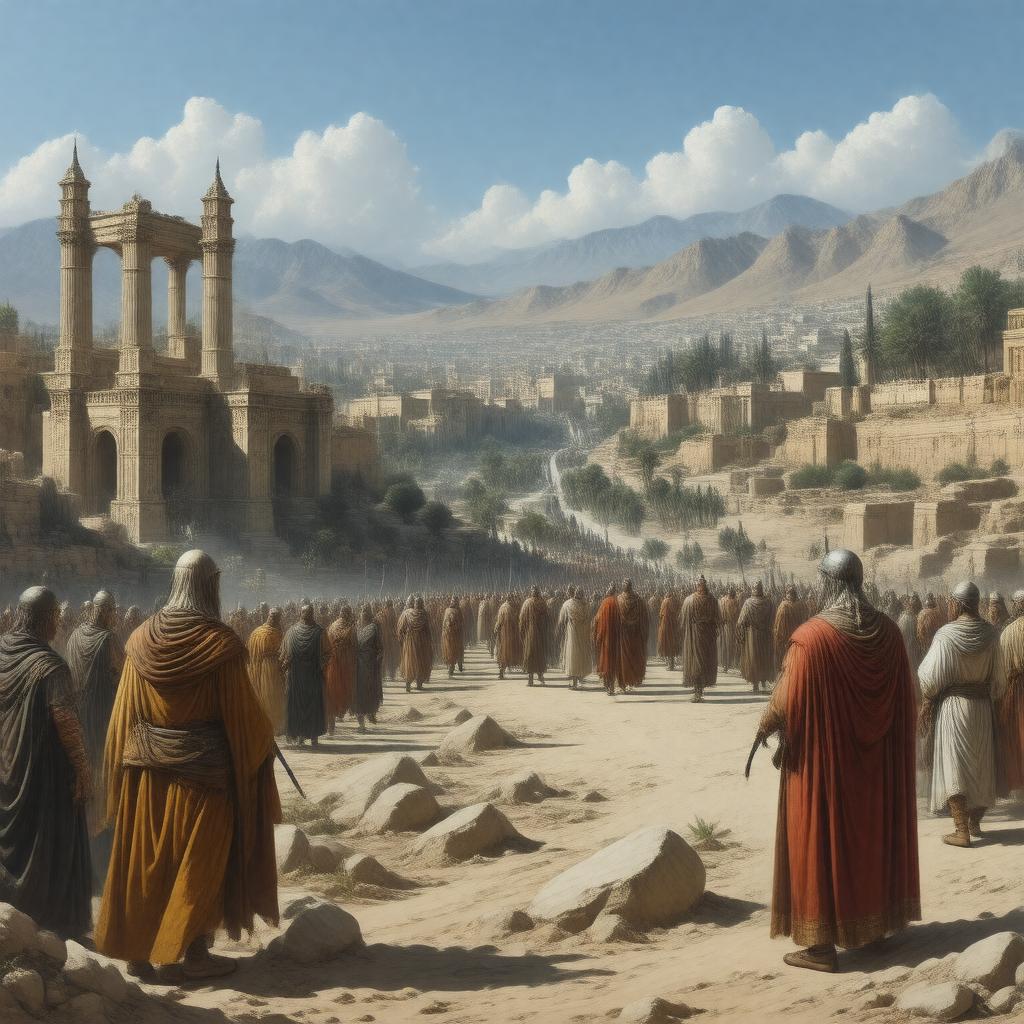Prompt
"Generate an image of a ancient Near East landscape with a cityscape in the background, featuring a mix of Aramaic script and architecture, with people dressed in traditional attire of the Late Bronze Age or Iron Age, possibly with a notable figure such as Hazael or a king of Aram-Damascus in the foreground, surrounded by symbols of the Ancient Semitic religion, with Damascus or Hamath in the distance, in a realistic style."

